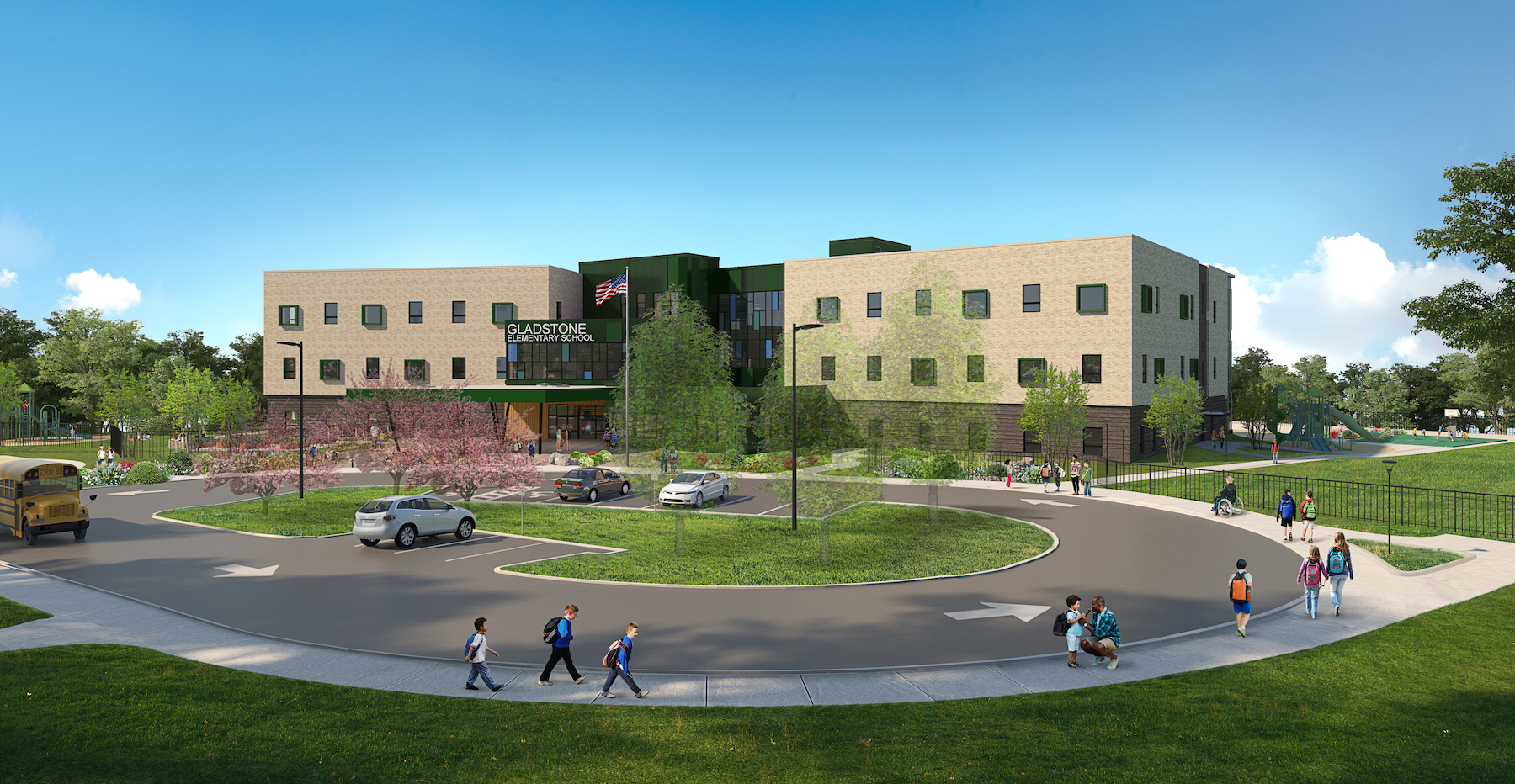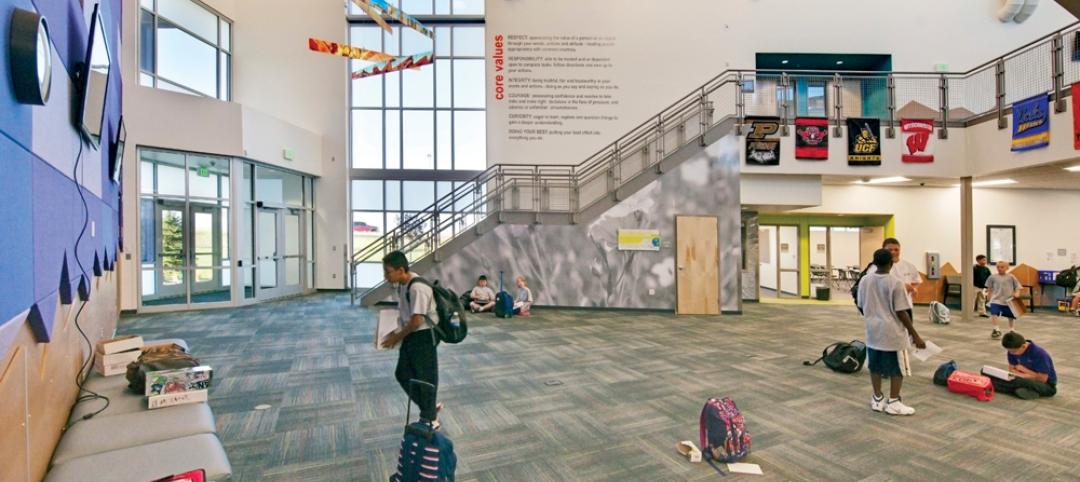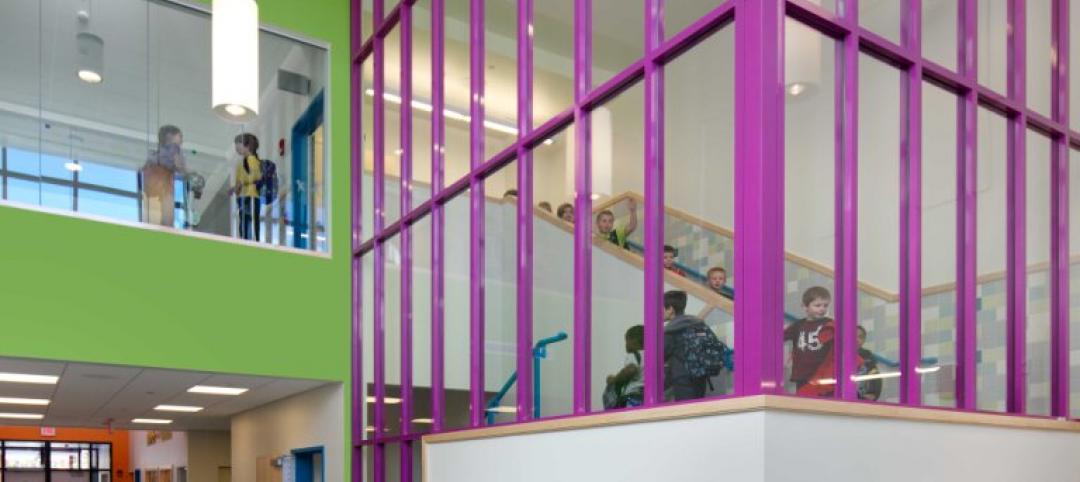Last November, Community Consolidated School District 15, consisting of 20 schools and seven municipalities in Illinois, approved the $93 million Moving 15 Forward referendum. Upon that approval, the District began work to address three major areas of improvement: repairing and restoring facilities, updating learning spaces, and streamlining students’ transitions from elementary through middle school into local high school districts 211 and 214.
Included in this effort is the expansion of Plum Grove Junior High School in Rolling Meadows, Ill., from a junior high serving seventh and eighth graders into a middle school that also educates sixth grade students.
Plum Grove Middle School, which will serve more than 800 students, is seen as a cornerstone of the District’s move toward adolescent-focused middle schools that use the “house” concept, which creates teams of teachers and staff that share smaller groups of students through an academic schedule.
Plum Grove’s $18.4 million upgrade and expansion got started on July 27. Wold Architects and Engineers provided the designs, and Nicholas & Associates is the general contractor. As part of Phase 1 of a four-phase construction plan, additions at Plum Grove include two new three-story classroom wings, or “houses,” which form the backbone of the middle school concept, for a total of 12 new general education classrooms.
Each grade-level house has its own learning commons with an innovative shared learning hub, including a central collaboration space, new science lab spaces, and modern, flexible classrooms. In addition, the project includes site updates such as traffic and paving improvements, a new track, and play fields.
Construction is expected to be completed for the 2024-2025 school year.
Sustainable, energy efficient design

A week before Plum Grove’s expansion was getting underway, the City of Cranston, R.I., held a groundbreaking ceremony for its new $83 million, 105,000-sf Gladstone Elementary School. This is one of five core building projects identified in Cranston’s five-year facility improvement plan that has been approved by Rhode Island School Building Authority for Housing Aid State Reimbursement.
Gladstone Elementary will be 40,000 sf larger than the existing school it replaces, and will incorporate the student body of Arlington Elementary, bringing its total to 798 K-5 students. The Building Team on this project includes Gilbane Building Company, Jacobs Engineering, and Finegold Alexander Architects. Construction is scheduled for completion in 2025.
The old school had been functioning up until June 14, but was in serious need of repair, with boarded-up windows. It will be demolished and during construction students will be relocated to a temporary location in Cranston.
The new building is designed to exceed current sustainability and energy codes. A combination of sub-surface and surface stormwater filtration systems are part of its scope, and the project will be compliant with the Northeast Collaborative for High-Performance Schools Criteria program (NE-CHPs), which provides guidance and verification for new school projects, renovations, and additions.
Gladstone will feature a combination of learning and community engagement areas, like a cafeteria and gymnasium with performance spaces. Its learning spaces will be modeled after Eden Park School in Garden City, where open floor plans contribute to collaborative learning environments. Gladstone will also have designated special-education classrooms, administration areas, a nurse’s office, and food preparation space.
Related Stories
| Oct 26, 2014
Study asks: Do green schools improve student performance?
A study by DLR Group and Colorado State University attempts to quantify the student performance benefits of green schools.
| Oct 21, 2014
Check out BD+C's GreenZone Environment Education Classroom debuting this week at Greenbuild
At the conclusion of the show, the modular classroom structure will be moved to a permanent location in New Orleans' Lower 9th Ward, where it will serve as a community center and K-12 classroom.
| Oct 16, 2014
Perkins+Will white paper examines alternatives to flame retardant building materials
The white paper includes a list of 193 flame retardants, including 29 discovered in building and household products, 50 found in the indoor environment, and 33 in human blood, milk, and tissues.
Sponsored | | Oct 16, 2014
Mill Brook Elementary School colors outside the lines with creative fire-rated framing solution
Among the building elements contributing to the success of the elementary school’s public learning areas is a fire-rated stairwell that supports the school’s vision for collaboration. HMFH Architects designed the stairwell to be bright and open, reflecting the playful energy of students. SPONSORED CONTENT
| Oct 15, 2014
Harvard launches ‘design-centric’ center for green buildings and cities
The impetus behind Harvard's Center for Green Buildings and Cities is what the design school’s dean, Mohsen Mostafavi, describes as a “rapidly urbanizing global economy,” in which cities are building new structures “on a massive scale.”
| Oct 12, 2014
AIA 2030 commitment: Five years on, are we any closer to net-zero?
This year marks the fifth anniversary of the American Institute of Architects’ effort to have architecture firms voluntarily pledge net-zero energy design for all their buildings by 2030.
| Oct 9, 2014
Regulations, demand will accelerate revenue from zero energy buildings, according to study
A new study by Navigant Research projects that public- and private-sector efforts to lower the carbon footprint of new and renovated commercial and residential structures will boost the annual revenue generated by commercial and residential zero energy buildings over the next 20 years by 122.5%, to $1.4 trillion.
| Sep 29, 2014
Living Building vs. LEED Platinum: Comparing the first costs and savings
Skanska USA's Steve Clem breaks down the costs and benefits of various ultra-green building standards and practices.
| Sep 24, 2014
Architecture billings see continued strength, led by institutional sector
On the heels of recording its strongest pace of growth since 2007, there continues to be an increasing level of demand for design services signaled in the latest Architecture Billings Index.
| Sep 22, 2014
4 keys to effective post-occupancy evaluations
Perkins+Will's Janice Barnes covers the four steps that designers should take to create POEs that provide design direction and measure design effectiveness.
















